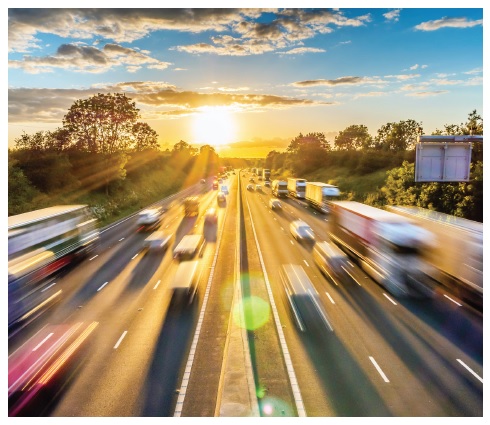On 12 March, 2020 the UK government published its report into the safety of so-called Smart motorways. David Jordan, deputy Editor of The Mover, looks at its findings.
 The report, which has been broadly welcomed by both the Road Haulage Association (RHA) and the Freight Transport Association (FTA), has concluded that Smart motorways, which use the former emergency breakdown lane - or ‘hard shoulder’ as they’re known in the UK - as a running lane, are at least as safe as conventional motorways. This despite at least 38 people being killed on them during the first five years of their operation.
The report, which has been broadly welcomed by both the Road Haulage Association (RHA) and the Freight Transport Association (FTA), has concluded that Smart motorways, which use the former emergency breakdown lane - or ‘hard shoulder’ as they’re known in the UK - as a running lane, are at least as safe as conventional motorways. This despite at least 38 people being killed on them during the first five years of their operation.
Anyone unfortunate enough to break down on a Smart motorway is advised to sit-tight and wait until help arrives, presumably while praying to their god that something very large doesn’t hit them up the rear in the meantime. According to a BBC investigation earlier this year, the average wait is about 35 minutes. The BBC also discovered via a Freedom of Information request that on a section of the M25 converted into a Smart motorway in 2014, near misses had risen from 72 to 1,485; a twenty-fold increase on the previous five years.
During the initial trials of Smart motorways on a section of the M42, new emergency refuge areas (laybys) were provided at 500m intervals and it was assumed by the then Minister of State for Transport, Mike Penning, who approved the scheme, that this policy would be followed subsequently. However, this was not the case and refuge areas are typically well over a mile apart and only large enough to accommodate one large vehicle at a time.
Thankfully, following the report and pressure from the FTA, RHA and others, the government has agreed to increase the number of refuge areas and abandon ‘dynamic’ Smart motorways, where the hard shoulder can only be used as a running lane during peak periods. ‘Stopped Vehicle Detection’ systems will also be installed throughout the network in an attempt to reduce the waiting time for recovery to 10 minutes. However, this is expected to take about three years to complete and will still leave vehicles stranded in a live lane if they don’t happen to be in reach of a refuge area.
Driver education will also be stepped up to increase awareness of Smart motorways and it has been suggested by RHA that Driver CPC should include a mandatory module on the subject.
The government has also pledged £5m to fund a campaign to make the public more aware of Smart motorways and how to use them. Motorists interviewed by the BBC at motorway service stations during their investigation had no idea what a Smart motorway was, even though they had just driven down one!
While it’s all very well for the government to talk about educating drivers it is surprising that motorway driving still isn’t part of the driving test in the UK. Two years ago, the law was changed to allow learner drivers to practise motorway driving while being supervised by a qualified driving instructor. However, despite driving tens of thousands of miles on motorways in the past two years, I have never seen a single learner driver, so presumably they are very few and far between. If it’s not part of the test, why bother, is probably the attitude.
We are often told that motorways are statistically the safest roads in Britain. That may be true, but when things do go wrong the consequences are often very serious.
Removing the hard shoulder and leaving drivers and their passengers stranded in a running lane is, in my opinion, madness, however well they are monitored. The only good thing about Smart motorways is they are a cheap option. Sadly, I fear the true price will be very high as more lives are lost in the years ahead.